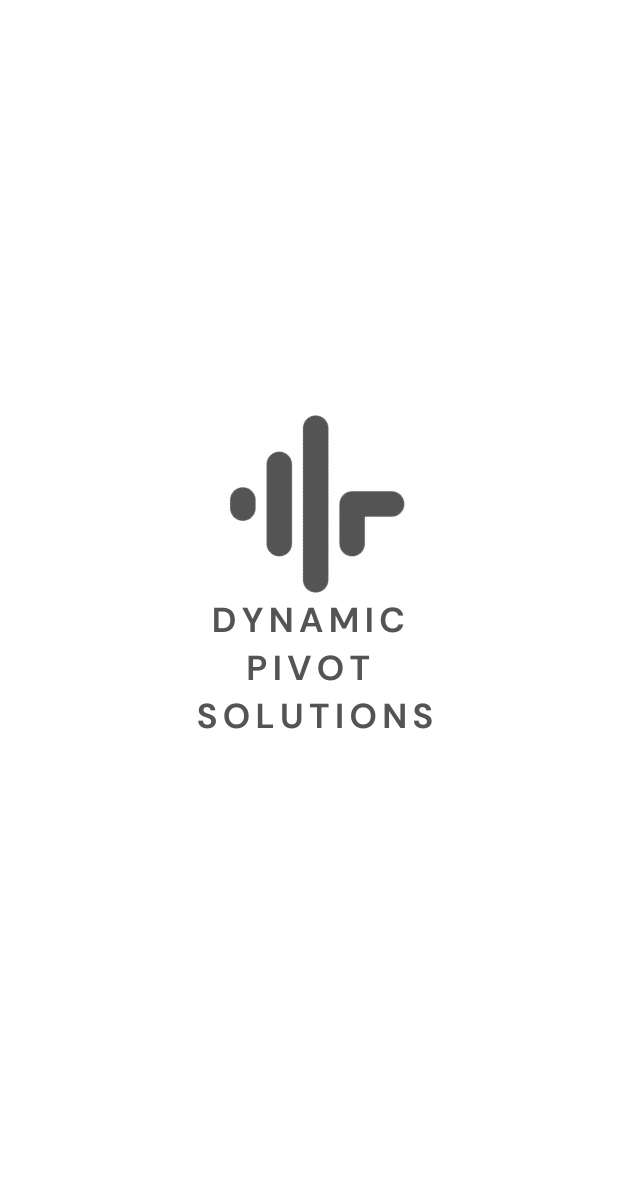Mastering Digital Excellence: The Synergy of Website Design, Copywriting, and Integrated Solutions
Unleash the Power of Cohesive Digital Strategies to Propel Your Business Forward

The Power of Professional Website Design
Website design is much more than just an art; it's a blend of creativity and strategy aimed at creating functional and appealing online environments. For businesses, a well-designed website serves as the hub of all digital marketing activities, not just reflecting the brand’s personality but also facilitating the user's journey from visitor to customer. It combines aesthetics with usability, ensuring that visitors not only find the website visually appealing but also easy to navigate.
Key Elements of Effective Website Design
A strategically designed website is crucial for creating a positive user experience and enhancing business performance. Here are the key elements that constitute an effective website design, each contributing uniquely to its success:
1. Layout and Structure
An intuitive layout is the backbone of effective website design. It should guide the visitor through the site’s content in a logical flow, making information easy to find and understand. Key considerations include:
- Grid Systems: These help in organizing content on a page clearly and consistently, which aids in maintaining alignment and balance.
- Whitespace: Adequate spacing between elements improves readability and focus, preventing the site from appearing cluttered.
2. Usability
Usability ensures that a website is user-friendly and accessible to all users, including those with disabilities:
- Navigation: Simple and clear navigation menus help users find what they need quickly. Dropdowns should be intuitive, and site search features should be easily accessible.
- Accessibility: Adhering to web accessibility standards (such as WCAG) ensures that the website is usable by people of all abilities and disabilities.
3. Mobile Responsiveness
With an increasing proportion of web traffic coming from mobile devices, mobile responsiveness is not optional but mandatory:
- Responsive Design: The website should automatically adjust its layout, content, and interactions to fit the device it is being viewed on.
- Touch Interactions: Design elements should be optimized for touch, including button sizes and interactive elements for ease of use on smaller screens.
4. Aesthetics
The visual appeal of a website not only attracts attention but also contributes to its branding and credibility:
- Color Scheme: Color schemes should reflect the brand’s identity and be pleasing to the eye, while also using contrast effectively to highlight key elements.
- Typography: Good typography enhances readability and the overall aesthetics of the site. Fonts should be legible, and font sizes should vary appropriately for headings and body text.
5. SEO-Friendly Features
Optimizing a website for search engines is crucial for increasing visibility and attracting more visitors:
- Speed Optimization: Websites that load quickly are favored by both users and search engines. Optimizing image sizes, leveraging browser caching, and minimizing code are crucial steps.
- Semantic HTML: Using proper HTML tags (like header tags for titles, p for paragraphs) not only structures content effectively for readers but also for search engines.
- Meta Tags: Accurate meta titles and descriptions help improve the website’s SEO and provide clear information in search engine results.
6. Interactive Elements
Interactive features can enhance user engagement and provide valuable functionality:
- Animations: Subtle animations can guide users' attention and improve the overall user experience without distracting from the main content.
- Feedback Forms: Interactive forms for feedback or contact are essential for engaging visitors and facilitating communication.
7. Content Quality
The quality of the content on the website is as important as the design:
- Relevance and Clarity: Content should be directly relevant to the audience’s interests and presented clearly and concisely.
- Engagement: High-quality images, infographics, videos, and well-written text engage users more effectively and encourage them to spend more time on the site.
Conclusion
These elements of website design work collectively to create a functional, attractive, and effective online presence. Each component, from layout to content, plays a strategic role in enhancing user experience and supporting the website’s business goals. For example, a tech startup might focus heavily on mobile responsiveness and interactivity to appeal to a tech-savvy audience, while a law firm might prioritize accessibility and content quality to establish authority and trust.
Incorporating these key elements thoughtfully will not only improve the aesthetics of a website but also its usability and effectiveness in achieving business objectives, thereby making a substantial impact on the overall success of the business’s digital marketing strategy.
Impact on Business Outcomes
A well-designed website can dramatically enhance business metrics. For example, a redesign focusing on improved usability and faster load times might result in:
- Increased visitor engagement, as measured by time on site and page views per visit.
- Higher conversion rates, with more visitors completing purchases or signing up for newsletters.
- Decreased bounce rates, indicating that more visitors find the website relevant to their needs.
Companies like Apple and Amazon have mastered the art of effective website design, combining aesthetics, functionality, and speed to provide a user experience that not only draws in visitors but also converts them into loyal customers.
The impact of professional website design on business outcomes is substantial and multifaceted. Below are detailed examples and explanations of how specific aspects of website design can influence key business metrics such as traffic, conversion rates, customer retention, and overall sales.
Increased Traffic
A well-designed website is pivotal for attracting more visitors. Key design elements that improve traffic include:
- SEO Optimization: Design choices that enhance SEO, such as faster load times, mobile responsiveness, and the use of alt tags on images, help improve a site’s visibility on search engines. For instance, Google ranks websites with mobile-friendly designs higher in its search results.
- User-Friendly Navigation: Websites that are easy to navigate are more likely to retain visitors longer. This increases the likelihood of visitors exploring multiple pages, which search engines interpret as a positive user engagement metric, potentially boosting the site's rankings.
Higher Conversion Rates
Effective website design directly influences the ability of a site to convert visitors into customers:
- Aesthetic Appeal and Professionalism: A visually appealing site projects professionalism and credibility, instilling trust in visitors. A trust-enhancing design can increase the likelihood that visitors will feel comfortable making purchases or signing up for services.
- Optimized Call-to-Action (CTA): Strategic placement and design of CTAs can guide visitors naturally through the buying journey. For example, contrasting colors for buttons, and clear, action-oriented text can increase the visibility and effectiveness of CTAs, leading to higher conversion rates.
Improved Customer Retention
The role of website design in customer retention cannot be understated:
- Personalization: Incorporating elements that can be personalized based on visitor behavior, such as dynamic content and tailored recommendations, can make users feel understood and valued, which increases loyalty and repeat visits.
- Speed and Reliability: A site that loads quickly and operates reliably under heavy traffic ensures a smooth user experience. Frequent downtime or slow response times, on the other hand, frustrate users and may drive them to competitors.
Boost in Sales
All the previously mentioned outcomes cumulatively contribute to an overall increase in sales:
- Integrated Shopping Experience: An effective design integrates the shopping experience seamlessly into the site’s layout. Features like easy-to-access shopping carts, streamlined checkout processes, and clear, informative product descriptions help minimize the friction in the purchasing process.
- Customer Reviews and Testimonials: Incorporating sections for customer reviews and testimonials within the design can significantly influence purchasing decisions. These elements provide social proof, reassuring potential customers of the product or service quality.
Case Studies and Real-Life Examples
To illustrate, consider a hypothetical case study of a company that revamped its website focusing on these design elements. After the redesign, the company saw a 40% increase in visitor traffic due to improved SEO, a 30% increase in conversion rates through better CTA placement and design, and a 25% increase in repeat customer visits due to enhanced personalization and user experience.
In conclusion, professional website design plays a crucial role in shaping business outcomes across various dimensions. It not only helps attract more traffic but also improves conversion rates, enhances customer retention, and ultimately boosts sales, demonstrating its critical importance in an effective digital marketing strategy.
The Role of Copywriting in Digital Marketing
Understanding Copywriting
Copywriting is the craft of writing persuasive marketing and promotional materials that motivate people to take some form of action, such as making a purchase, clicking on a link, or booking a consultation. In the context of digital marketing, copywriting is used across various platforms including websites, email campaigns, social media, and blogs.
Strategies for Effective Copywriting
Effective copywriting engages the reader and guides them towards the desired action. Key strategies include:
- Tone and Voice: The writing should reflect the brand’s personality, whether it’s professional, conversational, or informative.
- Clarity and Conciseness: Clear and direct messages resonate better with audiences.
- Target Audience: Understanding who you are writing for helps tailor the content to speak directly to their interests and needs.
- Strong Call-to-Action (CTA): Compelling CTAs guide users towards taking the next step.
SEO is a critical component of modern copywriting. Integrating relevant keywords naturally into the text helps improve search rankings without compromising the quality of the content.
Copywriting Success Stories
Effective copywriting can lead to significant improvements in digital marketing results. For example, a simple change in wording for a CTA can increase click-through rates by significant margins. Companies like Dropbox and Evernote have successfully used concise and compelling copy to attract and retain millions of users.
Harnessing Integrated Solutions for Marketing Efficiency
In the rapidly evolving digital landscape, harnessing integrated solutions is vital for marketing efficiency and effectiveness. Integrated marketing solutions bring together various tools and technologies, allowing businesses to create a cohesive and streamlined marketing strategy across multiple channels. Here’s a deeper look into how integrating these solutions can enhance marketing efforts:
Introduction to Integrated Solutions
Integrated solutions refer to the combination of various marketing technologies and strategies into a unified system. This integration facilitates seamless communication, consistent messaging, and comprehensive data analysis, which are crucial for effective marketing.
Benefits of Integration
1. Data Consistency
- Unified Customer View: Integration allows for the aggregation of customer data from various sources into a single view, making it easier to analyze patterns and tailor marketing strategies accordingly.
- Improved Data Quality: With a centralized data system, inconsistencies are easier to spot and rectify, leading to higher data accuracy and reliability.
2. Streamlined Communication
- Consistent Brand Messaging: Ensures that all marketing communications across different channels deliver a uniform message, which is crucial for brand recognition and trust.
- Efficient Resource Use: Reduces redundancy by allowing teams to reuse assets and data across campaigns, saving time and reducing costs.
3. Enhanced Analytics
- Better ROI Tracking: Integrated solutions provide advanced analytics that help marketers track and measure the effectiveness of their campaigns across all platforms in real-time.
- Predictive Analytics: By combining data from multiple sources, businesses can better predict customer behaviors and adjust strategies proactively.
Examples of Integration Tools
- Customer Relationship Management (CRM) Systems: Tools like Salesforce integrate with various marketing platforms to streamline customer interactions and data management.
- Email Marketing Platforms: Solutions like Mailchimp integrate with other tools to automate email campaigns based on customer behaviors captured through different channels.
- Social Media Management Tools: Platforms like Hootsuite allow for the scheduling and analysis of social media posts across multiple networks from a single dashboard.
- Content Management Systems (CMS): Systems like WordPress can be integrated with SEO tools and other plugins to optimize content creation and distribution.
Real-World Applications
Case Study: A Retail Company
Consider a retail company that implemented integrated solutions by combining their CRM, email marketing, and e-commerce platform. The integration allowed for automated personalized emails based on customer purchase history and browsing behavior. As a result, the company saw a 20% increase in customer retention and a 30% increase in upsell conversions.
Impact on a Marketing Agency
A marketing agency integrating SEO, content management, and analytics tools was able to deliver more cohesive and data-driven strategies for clients. This approach led to improved campaign performance and client satisfaction due to more targeted and effective marketing efforts.
The adoption of integrated marketing solutions allows businesses to operate more efficiently and effectively by ensuring that all parts of the marketing strategy are aligned and informed by consistent, comprehensive data. This holistic approach not only improves the effectiveness of individual campaigns but also enhances the overall strategic decision-making process, leading to sustained business growth and a stronger competitive edge in the market.
By focusing on these key areas, businesses can maximize the impact of their marketing efforts and ensure a seamless customer experience across all digital touchpoints. As companies continue to navigate the complexities of modern marketing, those that successfully implement integrated solutions will be better positioned to adapt to changing consumer behaviors and market dynamics, ultimately achieving better outcomes and a higher return on investment.
Conclusion
In the modern business environment, leveraging professional website design, effective copywriting, and integrated solutions is crucial for achieving successful digital marketing outcomes. These components are not standalone elements but part of a comprehensive strategy aimed at enhancing online presence and engaging customers more effectively.
Endorsement of Dynamic Pivot Solutions
For businesses looking to harness the power of professional website design, compelling copywriting, and integrated marketing solutions, Dynamic Pivot Solutions stands as a beacon of excellence. Visit Dynamic Pivot Solutions to discover how their expert services can elevate your digital marketing efforts and transform your business's online presence. Let their team of professionals help you create a digital experience that captivates and converts.








